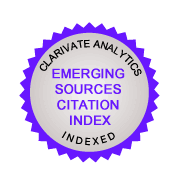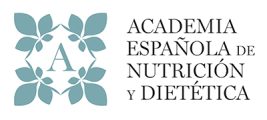Methodological note 5. Trained and untrained panels in sensory evaluation of products: How do I know which one is best for my study?
Trained and untrained panels in sensory evaluation of products: How do I know which one is best for my study?
María Victoria Avilesa*; Amparo Gamero Llunab, Édgar Pérez Estevec
aInstituto de Ciencia y Tecnología de los Alimentos de Entre Ríos. CONICET-UNER. Gualeguaychú, Entre Ríos, Argentina. bDepartamento de Medicina Preventiva y Salud Pública, Ciencias de la Alimentación, Toxicología y Medicina Legal, Faculta de Farmacia y Ciencias de la Alimentación, Universitat de València, Valencia, España. cInstituto de Ingeniería de Alimentos FoodUPV, Universitat Politècnica de València, Valencia, España.
*mariavictoria.aviles@uner.edu.ar
---
Sensory analysis is a fundamental scientific discipline for eliciting, measuring, analyzing, and interpreting the characteristics of products perceived by the human sense organs. This methodological approach is applied in various industries, such as food, cosmetics, and other consumer goods, to evaluate the quality, acceptance, and preference of products (Lawless and Heymann, 2010).
The number of participants in a sensory analysis varies depending on the type of study and the specific objectives. Sensory panels are generally classified into two types: trained panels and untrained panels (or consumers). A trained panel typically consists of 8 to 12 participants (Stone et al., 2012). The need for a small number of panelists is justified by the exhaustive training required for panel members to be able to consistently identify and rate the sensory attributes of the product (Meilgaard et al., 2007). This training can extend over several weeks and requires regular recalibration sessions to ensure the accuracy and reproducibility of the assessments (ISO 8586:2012).
In contrast, studies with untrained panels typically involve between 50 and 100 participants (Lawless and Heymann, 2010). The larger number of participants is due to the intrinsic variability in consumers’ sensory perceptions, which demands a larger sample size to obtain statistically significant results (Stone et al., 2012). Participants do not receive prior training, as the aim is to capture their spontaneous perceptions and preferences (Meilgaard et al., 2007).
A trained panel is appropriate when a detailed evaluation of specific sensory attributes—such as flavor, aroma, texture, and appearance—is required. Trained panellists can provide an accurate and reproducible sensory profile (ISO 13299:2016). This approach is essential in quality control to monitor product consistency over time, ensuring that product variations are accurately detected (Lawless and Heymann, 2010). Furthermore, it is crucial in research and development, allowing the comparison of different formulations or production processes and providing detailed data on sensory differences (Stone et al., 2012). Conversely, untrained panels are used in consumer preference studies, which aim to determine the overall acceptance of the product by end consumers (Meilgaard et al., 2007). They are also useful in prototype testing, assessing how a product might be received in a specific market or comparing acceptance across different demographic segments (Lawless and Heymann, 2010). They are also suitable for innovation testing when examining new product concepts, where overall consumer perception is crucial in deciding whether a product should advance to the next stage of development (ISO 11136:2014). Panelist selection is a critical aspect of sensory analysis. In trained panels, participants must be selected and tested on their ability to distinguish and reproduce sensory perceptions (ISO 8586:2012). In untrained panels, a representative sample of the target market is selected (Stone et al., 2012). The study design also varies depending on the type of panel. In trained panels, analytical methods such as quantitative descriptive analysis (QDA) are used, where panelists rate sensory attributes on defined scales (ISO 13299:2016). In untrained panels, effective methods such as preference tests and hedonic acceptance are employed, where consumers rate product liking or preference (Meilgaard et al., 2007). Data analysis also differs between panel types. In trained panels, advanced statistical analyses such as analysis of variance (ANOVA) are used to identify significant differences in sensory attributes (Lawless and Heymann, 2010). In untrained panels, descriptive and comparative analyses determine product preferences and acceptability (ISO 11136:2014).
Sensory analysis is a powerful tool for understanding consumer perceptions of products and ensuring product quality. The choice between a trained and untrained panel depends on the specific objectives of the study and the type of information to be obtained. An adequate study design and the correct selection of the panel type are essential to obtain valid, useful results and successful products (Stone et al., 2012).
In conclusion, sensory analysis is an essential tool for evaluating the quality and acceptance of products in various industries. The choice between a trained or untrained panel will depend on the objectives of the study and the type of information required. While trained panels allow for obtaining precise and reproducible sensory profiles, untrained panels reflect the perception and preference of the final consumer. Therefore, the editorial committee of RENHYD encourages the appropriate use of these tools, which requires not only a robust methodological design—based on the correct selection of the type and number of panelists—but also the appropriate evaluation techniques and data analysis methods. This information should be clearly stated in the methodology section of articles, with references to the relevant ISO standards used in the study.
References
International Organization for Standardization. (2012). ISO 8586:2012. Sensory analysis - General guidelines for the selection, training and monitoring of selected assessors and expert sensory assessors.
International Organization for Standardization. (2014). ISO 11136:2014. Sensory analysis - Methodology - General guidance for conducting hedonic tests with consumers in a controlled area.
International Organization for Standardization. (2016). ISO 13299:2016. Sensory analysis - Methodology - General guidance for establishing a sensory profile.
Lawless, H. T., & Heymann, H. (2010). Sensory Evaluation of Food: Principles and Practices. Springer.
Meilgaard, M., Civille, G. V., & Carr, B. T. (2007). Sensory Evaluation Techniques. CRC Press.
Stone, H., Bleibaum, R., & Thomas, H. (2012). Sensory Evaluation Practices. Elsevier.










